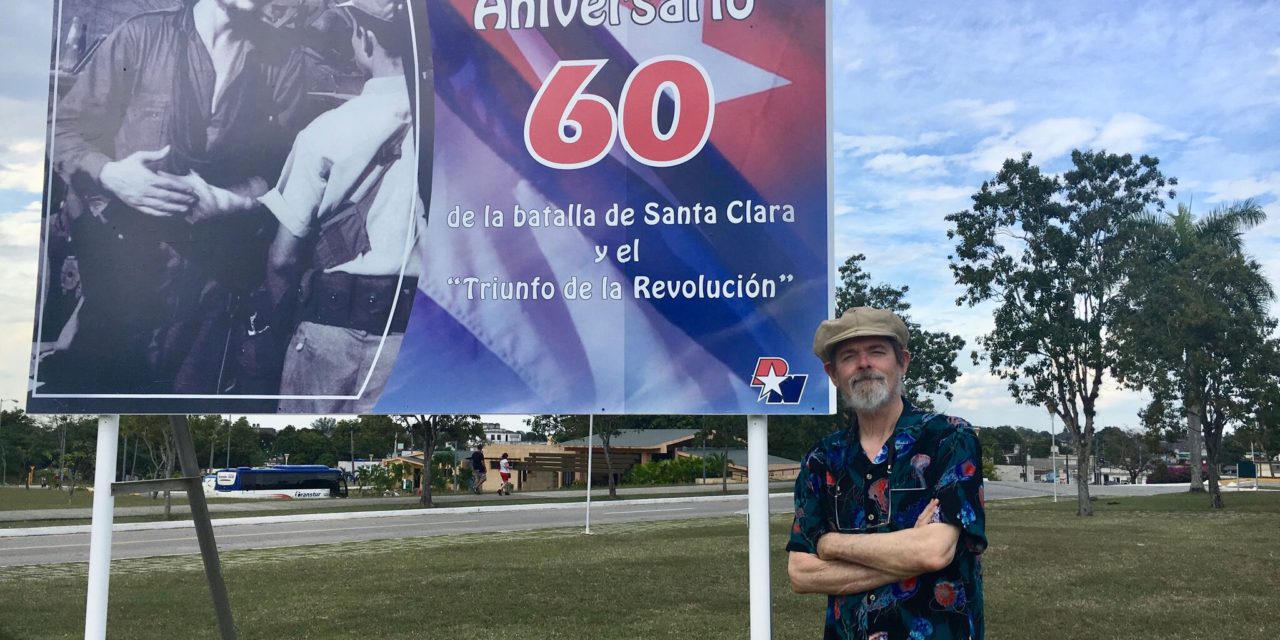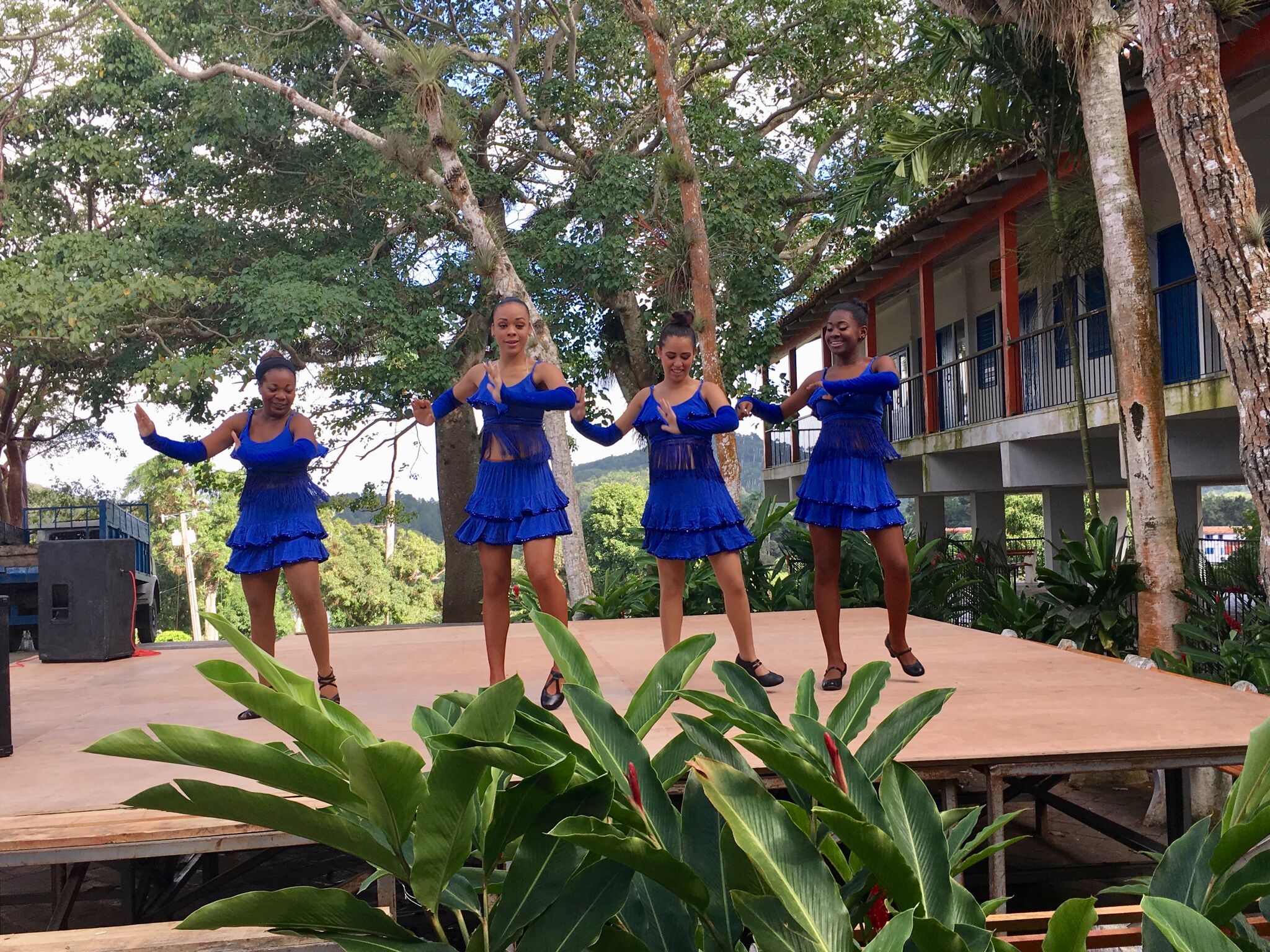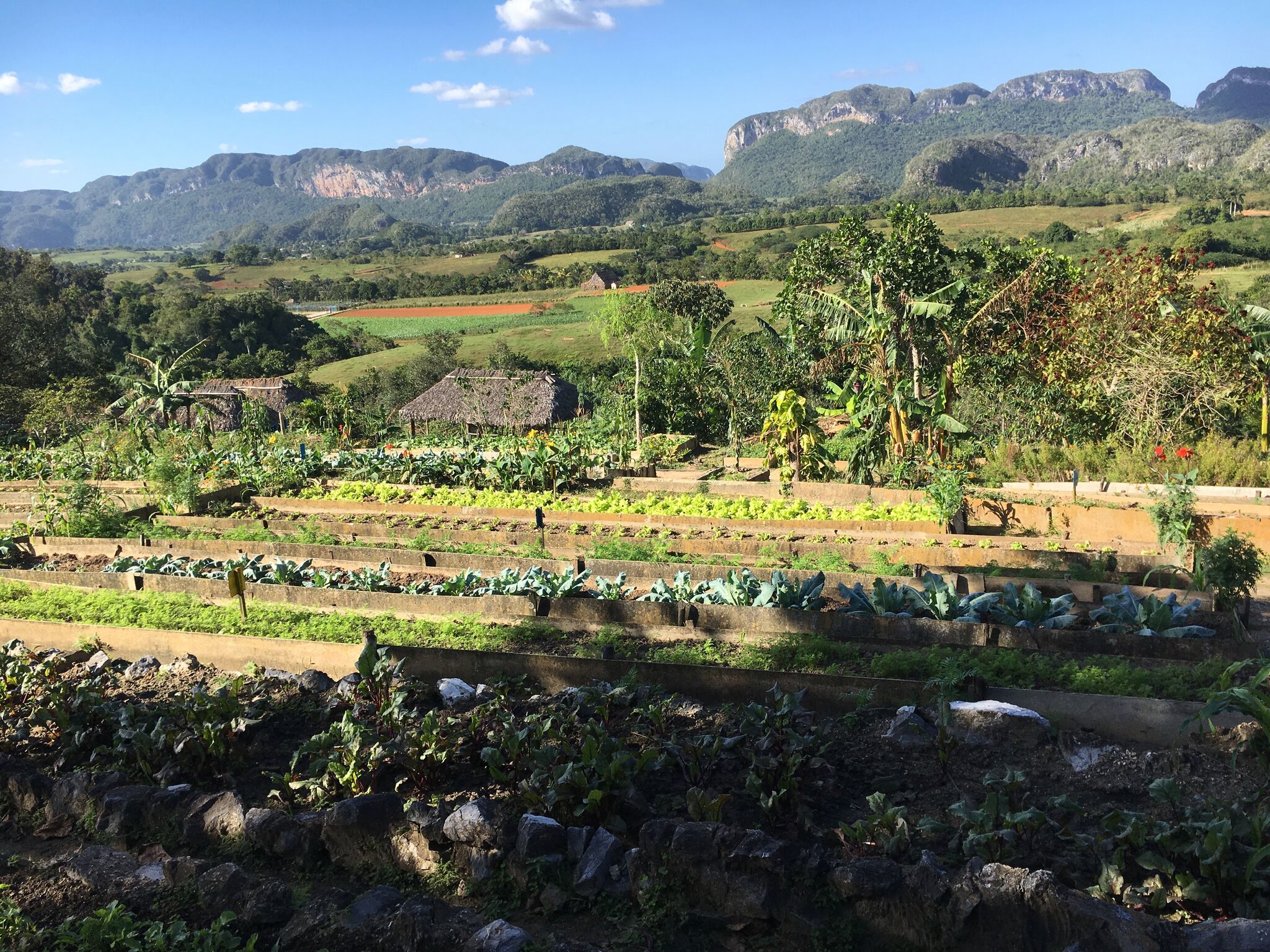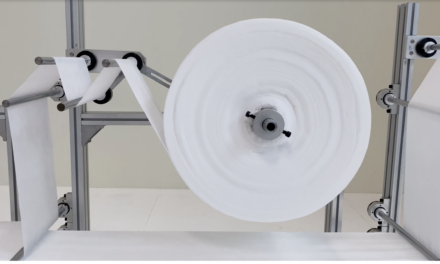By Dale Gieringer
Hola! Alice and I are back from a New Year’s tour of Cuba. We were looking for some place different to travel and weren’t disappointed. Cuba is the only country in the hemisphere removed from the orbit of U.S. capitalism. This turned out to have advantages as well as disadvantages.
On landing in Havana, we got the distinct impression of entering a second-world country, Buildings in the old town had attractive colonial architecture a la New Orleans, but were decrepit and run-down, with crumbling walls, peeling facades, pane-less windows and doors opening directly on the street so as to expose residents’ living and dining rooms to public view. Famously, Cuba boasts a large stock of colorful 1950’s-era Chevrolets, Fords, and other classic U.S. autos which they manage to keep running and are available for hire.
The Cuban economy operates under a rigid regime of socialismo. Every industry is a state-run monopoly (unlike in today’s China or Russia). The result is to greatly reduce the variety and availability of consumer goods & services. Shortages are further exacerbated by the American boycott, which prevents the import of goods from the U.S. and elsewhere.
The major exception is tourism. Cubans are allowed to run private guesthouses and restaurants (paradors) from their homes ever since Fidel’s retirement in 2007, when Raoul liberalized the laws and allowed Cubans to own cell phones, travel abroad, and sell their homes. We stayed at these private guesthouses and were delighted by the hospitality of our hosts, although our accommodations didn’t rise above 2 stars and were sometimes lacking in functioning toilet seats, air conditioning, lighting, and other conveniences. Our hosts were appreciative when we left them a bar of soap, ball point pen, or travel sewing kit by way of a tip.
We felt welcome as Americans in Cuba. The people are friendly; they listen to our music, watch our sports and action shows, and wear clothing bearing American flags and team logos. Many Cubans have relatives in the USA, whom they visit. The population is a rainbow of races and ethnicities —Africans, creoles, Hispanics, Indians, Europeans. Coming from the Bay Area, it was easy to feel at home in the crowd.
The Cuban government makes it easy for foreigners to visit; visas are available for $50 at the airport. However, our own government restricts how we can travel there. We were obliged to book a so-called “people-to-people” tour from an approved travel agency. This turned out to be great, as we had a wonderful guide and traveling companions. Under terms of the tour, we had to engage in scheduled activities and could stay only at private guesthouses and restaurants, not government-run facilities, which was fine with us.
U.S. credit cards and checks aren’t accepted due to the embargo, so we had to deal in cash. Since dollars are subject to a special 10% exchange surcharge, we brought along Euros, which we changed to the local currency, “CUCs.” Small change was necessary for tips and toilet paper at bathrooms, but hard to come by. Bank lines were long.
Phone and internet access were a major problem. In order to get on-line, one must procure a special card at a state store; an ID is required, and only a few hours can be purchased at one time. Every store has a long line of customers outside. The first time, it took us an hour and a half to navigate the line; the second time we gave up and resorted to a scalper. Even then, hotspots were hard to find and the cards usually failed to work.
The internet is the Cuban people’s portal to outside information. Newsstands are non-existent; the state newspaper, Granma, is a propaganda rag. Bookstores are ill-stocked and heavily slanted to politically acceptable chestnuts like Castro and the Revolution, Che Guevara, Hemingway, etc.
Transportation can be another hassle, unless you have a pre-booked tour like we did. Buses to the next town are often booked up weeks in advance. The roadsides are lined with people sticking out their thumbs trying to hitch a ride.
Traffic is refreshingly sparse. There are a few divided highways, but it’s necessary to watch out for horse-drawn carriages, ox carts, bicycle cabs, and cowboys riding horseback in the right lane, not to mention broken pavement. We didn’t see a single stop light outside of Havana.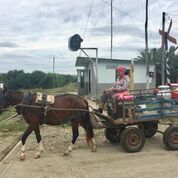
Cubans are proud of their free education and health care systems. They also have a food rationing system that allows them to purchase a fixed amount of certain staples at incredibly low prices: one penny for 1 lb. of rice (even though they’re on the metric system, they weigh food in libras). Wages at state enterprises are correspondingly low: $30-40 per month. As our guide explained, “Cubans pretend to work, and the state pretends to pay them.” The rest of the time they try to wangle special favors and do odd jobs. One of our taxi drivers had an MD in gastro-enterology, but was working as a cab driver because that way he could earn $600 a month. Health care is one of Cuba’s leading exports; they send doctors abroad in exchange for oil, which has been in short supply since the fall of the Soviet Union. Eighty per cent of Cubans own their own homes, modest though they are by American standards. We saw no homeless vagrants, but a few disabled beggars.
Cuba experienced a difficult “special period” in the ’90s when the Russians stopped sending them oil, forcing Cubans to drastically tighten their standard of living. Large-scale sugar cane farms that were reliant on machinery and petrochemical fertilizers were phased out and replaced by small-scale organic farms. The Cuban government is proud of its pro-environmental, anti-consumptionist policies.
Cuban cuisine was plentiful though monotonous. Every meal —lunch and dinner— featured ample platters of roasted meat (pork, chicken, fish, shredded beef) with rice and beans, pumpkin squash, manioc or sweet potatoes, taro or plantain chips, and a salad of sliced tomatoes, cucumbers, and shredded lettuce. Desayuno (breakfast) included pineapple, banana, guava, papayas, and mango juice, and the usual state-issued bread, a bland Parker House roll.
Time and again, we were served free rum cocktails with our meals – mojitos, daiquiris, or Cuba libres —the latter made with a state-manufactured cola resembling Royal Crown. Rom is the national drink of Cuba, sold at the same price as soft drinks at restaurants — $3 per drink. We would have preferred wine, but it was more costly and of dubious vintage.
Tobacco remains a top Cuban export. We visited a farm in Cuba’s prime tobacco-growing region of Viñales, whose proprietor skillfully rolled hand-made cigars with wrappers stuck together by honey. Although hardly anyone we know smokes cigars, I bought a dozen anyway. . Unlike California and most places in the free world, Cuba permits smoking at restaurants and clubs at the proprietor’s option.
We happened to be in Cuba on New Year’s for the 60th anniversary of their revolution. On Dec. 31, 1958, the corrupt dictator Batista fled the country; I remember watching on TV as Castro waved victoriously to the crowds. Despite the momentousness of the anniversary, there was no conspicuous public celebration. We never heard a word about Cuba’s current leader, an obscure functionary named Miguel Díaz-Canel. Aside from occasional faded billboards with revolutionary slogans, there were surprisingly few public signs of Castro (and hardly any of Raoul), but Ché Guevara’s image was ubiquitous on billboards, souvenirs, posters, T-shirts, book covers, and currency.
Although our tour guide Dany seemed apolitical, the Cubans are patriotic, and our tour made us very conscious of Cuba’s socialist revolution. At the Museum of the Revolution in Havana, we saw photo displays of Castro’s guerrilla war against the Batista regime; also a life-size diorama of Ché Guevara in fatigues and a random bust of Abraham Lincoln. We were especially impressed by the Playa de Girón Museum at the Bay of Pigs, which displays relics of the disastrous U.S.-sponsored invasion, including U.S.-supplied airplanes, tanks and mortars, plus memorials to the 100+ Cubans who died in defense of the revolucion. As Americans, it was hard not to feel ashamed of our nation for having embarked on such a foolish, violent and counterproductive debacle (which I remember enthusiastically supporting at the time). Our final patriotic visit was to Ché Guevara’s mausoleum and monument in Santa Clara, where his ashes are solemnly interred, and his medical kit, army fatigues and hat, notebooks, pipe, and radio equipment are on display. I dutifully removed my hat inside, despite my decided distaste for Ché’s penchant for violence, reckless aggression, and disastrous utopian mismanagement.
The matron of one guesthouse proudly showed us a photo of her husband as a boy of 12, when he fought alongside Ché. She also had a Christmas tree. There were no public Christmas displays in the streets, but some guesthouses displayed tokens of Christian faith. There was also a mosque in Havana.
Public affairs being off limits, Cubans occupy themselves with music —Caribbean salsa dancing— arts, and sports. Cuba is rich in artists, craftsmen, and street performers, if lacking in high-tech industry, construction activity, and business people. We did not see anyone in business attire while we were there.
Unlike in many neighboring countries, the streets were safe at night. Guns are verboten except for the police and military. The police were relaxed and unobtrusive. Although the Cuban intelligence service reputedly knows everything, we had no sense of their presence, as they operate opaquely through neighborhood committees and informants.
We rode the bus for long hours through peaceful countryside with few signs of development, past sugar cane, palms, and tobacco fields. The scene was blessedly free of traffic congestion, billboards, stop lights, shopping malls, etc. Large stretches of countryside were undeveloped greenery. There were pleasant national parks and beaches to visit.
It dawned on us how wonderfully peaceful and satisfying life in the slow Cuban lane could be, free from the obsessions of consumerist society. Cubans have much to enjoy: a beautiful country, vibrant culture, ample food, housing, education, and health care. They treated us warmly and want good relations. It seemed hard to understand why the US continues to treat their country more harshly than Russia, China, Saudi Arabia, and similar corrupt autocracies. Of course, the Cubans would like to be better off. They would like the embargo to end, to eliminate the lines, end bothersome restrictions, make better salaries, and not worry about the absurd politics that separates their government from ours. Repairing relations is apt to be a difficult balancing act, which could ultimately compromise the advantages of living outside the U.S. orbit. We are glad to have visited Cuba when we did, yet hope relations will improve in the future.

